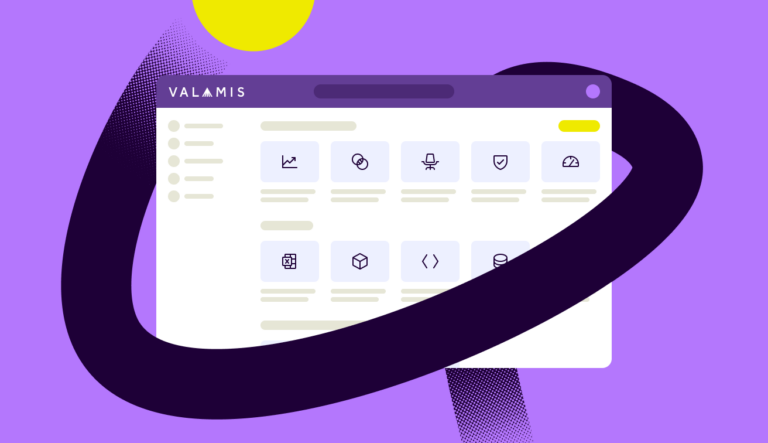Key areas of employee development
In this article, we will cover 12 key employee development areas and the most effective ways to develop them

Note: In combination with another article, “11 Employee development methods,” you will learn how to build comprehensive learning programs for your employees. This guide does not cover technical skills as they encompass numerous sub-skills, each critically important.
The list of key employee development areas (in our opinion)
- Flexibility
- Communication skills
- Conflict resolution, tactfulness, work ethic
- Leadership skills
- Organizational skills
- Creativity skills
- Goal setting
- Stress management
- Emotional intelligence
- Collaboration
- Presentation skills
- Cross-functional knowledge
Flexibility
Why it matters: Flexibility enables employees to adapt to changing circumstances, making them more resilient and valuable to the company.
Tip: Adaptability is the key to an employee’s well-being and ability to thrive within the work environment.
A static employee is one that will quickly become disengaged from excelling and moving forward, or worse, overwhelmed and overstressed, resulting in poor performance or an early evacuation/termination from the organization.
Ways to help in developing flexibility:
1. Job rotation: Rotate employees through different roles to expose them to various functions.
2. Agile training: Implement Agile methodologies that emphasize adaptability and quick responses to change.
3. Scenario planning: Conduct regular workshops where employees solve hypothetical problems that require quick thinking and adaptation.
4. Support networks: Often, the root cause of inflexibility in the workplace comes from a sense of feeling overwhelmed in a role.
Example: Encourage employees to use Trello, Jira or Monday boards to manage different types of tasks and adapt quickly to changes in project scope or deadlines.

Career development plan template
This template helps employees and leaders plan together for career growth: set goals, assess skills, and make a plan.
Download nowCommunication skills
Why it matters: Effective communication fosters collaboration and minimizes misunderstandings, leading to a more efficient and harmonious workplace.
Ways to help in developing communication skills
1. Frequent meetings
Managers should meet frequently with their chain-of-command employees.
Additionally, as employees, it helps to hold regular touch-points with peers and colleagues to keep information, thoughts and an exchange of ideas flowing freely across the organization.
2. Formal training
Some soft skills, such as listening and picking up visual cues and interpreting body language, need to be developed through formal training.
Organizations must invest in helping employees to communicate across company hierarchy – with peers, supervisors, senior management and executives.
Also, make sure you don’t forget various types of communication skills – written, oral, in-person and remote, including digital and traditional.
3. Assigning group projects
Working on group projects can also help bring out the best amongst individuals and teams.
Volunteering to work on cross-team projects helps communication, promotes team spirit and offers a change to hone interpersonal skills.
4. Cross-functional workshops
Engage in different discussions and situations.
Talk with people from other cultures, people with different personalities, people with different backgrounds, people in different positions in the company, etc.
Learn from them and try to understand their point of view.
5. Feedback sessions
Offering feedback, and accepting it positively, is often tough, but it can lead to positive skills and development outcomes.
Delivering criticism in a positive – often private – way allows such critique to be construed less as “reprimand” and more as advice. Accepting criticism without fear that “management is out to get you!” can turn critique into a learning point.
Again, present it as constructive feedback and not as just criticism. Also, encourage the two-way street of both asking for and giving feedback.
6. Self-reflection and observing others
See how you act in different social situations.
- What situations make you feel uncomfortable or unable to act?
- What could you do to improve your communication etc?
Also, be cognizant of how other people act in different situations, maybe you can find out good tips on how to act (or what not to do) in certain situations.
If you want to get more details, read our article about improving communication skills.
Conflict resolution, tactfulness, work ethic
Why it matters: These skills help maintain a positive work environment and ensure that conflicts are resolved constructively.
At the same time, doing what’s morally right, and taking on ethical positions in the workplace can generate conflict. It takes skill to navigate these three – sometimes conflicting – domains.
Ways to develop:
Here’s how employers and employees can work together on developing these skills for the good of individuals and the organization as a whole:
1. Training
Employers can nominate employees, especially those who are being groomed for leadership roles, for conflict management and arbitration training.
Veteran employees can also coach less-senior staff on how to de-escalate potentially volatile situations.
Practicing listening skills, learning how to communicate during stressful situations, and mastering the art of being polite but assertive can also help diplomatically resolve workplace conflicts.
2. Role-playing scenarios
Practice real-life situations to develop tact and diplomacy.
3. Work ethic seminars
Workshops that highlight the importance of integrity, responsibility, and perseverance.
Tip: Employers can aid good work ethics by creating a safe, fair and healthy working environment for all employees.
Although at first blush, these may seem like disparate employee development areas examples, they are in fact highly correlated.
At the end of the day, if employers and employees work jointly to develop these skills, everyone will learn to “get along better” for the greater good of the self and the organization.
Leadership skills
Leadership styles are diverse but to lead effectively there a few key skills that are common amongst good leaders.
Leadership skills are highly valued by employers; effective leaders can motivate and help others succeed within an organization.
A positive leader can lift a company above the competition, while a negative leader can make the work environment a dreadful, unmotivated and withering atmosphere.
Ideas on how to develop leadership skills
1. Mentoring
To grow as a leader, it’s best to be led by another one.
2. Formal training
Offer leadership training programs that cover essential skills such as decision-making, strategic thinking, and team management. Mentorship programs can also provide valuable guidance and support for emerging leaders
3. Volunteering
Employees can volunteer their expertise – for instance taking company trainees under their wings, or speaking to a batch of novice workers at a convention, to hone some of these skills.
4. Task forces
Forming task forces, to deal with unique organizational challenges, is a great practice run for future leaders.
It can also help employees hone their decision-making and problem-solving skills.
5. Participation in working groups and committees
Willing participation in working groups and committees is also a good way to polish leadership skills.
It also helps employees build self-confidence in their abilities as individual contributors to such workgroups.
6. Change the way the responsibility is taken
For example give a pilot project, with permission to fail, so they won’t be afraid and will act.
Often, the fear of failure is the most limiting factor in innovation and creativity.
There may be a fearful genius waiting in the wings that just needs a safe atmosphere to let their talents shine – give them that chance.
Additional resources to read:
Organizational skills
Balancing a multitude of tasks effectively and efficiently requires a specific set of skills:
1) Prioritization
The answer isn’t always what’s most important now, but more so, what needs to be completed first to allow for all the other big-picture pieces to fall into place.
2) Time management
This is part prioritization and part efficiency. By developing good habits and dialing in the daily workflow one can capitalize on all the available hours in a day.
3) Multi-tasking
If you’ve seen a master multi-tasker it’s incredible! They’re a blur of activity, accomplishing several things at once.
Tip: Just make sure to find a balance; often there’s a negative return on investment when we try to do too many things at once.
4) Managing appointments
No one wins when meetings are missed or appointments are routinely bumped.
Allot enough time for each appointment and add a little buffer time if you’re continually running late.
5) Productivity
This isn’t just working, it’s getting things done.
If it’s taking you twice as long to do something as a colleague, reevaluate and get input on what’s making them so much more efficient.
6) Scheduling
The key here is details. Stick to a repeatable format that answers all the questions: who, when, where and what.
Be particularly mindful of travel time and conflicts.
7) Meeting deadlines
Lose the notion that a deadline is just a suggestion.
All these employee development areas fall under the realm of work management.
Creativity skills
Why it matters: Creativity fuels innovation, helping companies stay competitive and solve problems effectively.
Innovation is often the result of inspiring greater creativity.
By developing a culture in which employees are encouraged to share ideas, a creative and innovative workplace can be fostered.
Consider implementing these practices
- Ensure employees value the importance of creativity, much like any other skill, by setting time aside to formulate ideas.
- Try suggestion boxes, group sharing and team outings focused on new ideas.
- Task/job rotations (covered below) are a great way for employees to consider how one solution can be applied differently in their own field. Gaining new perspectives can be the perfect starting block for new processes.
- Be supportive of all ideas, even if they’re not initially “winners”, being enthusiastic grows the process for better ides in the future. Likewise, accept that new ideas come with a certain amount of risk, so don’t punish the ideas that fail; do, however, reward ideas that are impactful.
Use these techniques with the goal of developing the following skillset. In doing so, a creative work environment can thrive and produce truly impressive results.
Stress management
Why it matters: Effective stress management leads to better well-being and productivity.
The benefits of creating a less stressful work environment are universally beneficial to both the employer and employee.
Ways to lower stress in the workplace
1. Set clearer goals
Team members are much more comfortable with well-defined goals, knowing exactly what they need to focus on, why, and when it’s due.
2. Encourage movement and plan it into the workday
Teach at-desk/in-cubicle stress-relieving exerciseslike relaxation techniques, stretching, “standing Yoga” to help make the workday less stressful.
Consider on-premises fitness rooms.
Whether it’s exercise at the desk or a walk after lunch, support employees getting up and moving around. Breaks are okay during the work day!
3. Support employee efforts at stress management
Provide access to stress counseling. As employees use these services, they’ll develop the skills to better manage stressful situations on an ongoing basis.
4. Emphasize and train for time management
Have employees take a moment at the beginning of each day to plan and prioritize.
5. Offer a more flexible work environment
One of the greatest stressors most employees face is the balancing of family and home life with work.
If the work is being completed successfully and on time, don’t emphasize the traditional nine to five work schedule. Investigate alternative and hybrid models, e.g., 9/80 schedule.
Things come up, allow the employee to handle them without adding additional stress.
Additional resources to read about stress management
What Managers Can Do to Ease Workplace Stress
Emotional intelligence
Why it matters: High emotional intelligence improves interpersonal relationships and team dynamics.
Ways to develop:
- Take courses that focus on self-awareness, self-regulation, and empathy.
- Keep a journal or engage in regular self-reflection.
- Participate in exercises that build trust and understanding among team members.
Implement self-awareness training and empathy exercises. Encourage mindfulness practices to help employees manage stress and enhance emotional regulation.

How to conduct a skills gap analysis and what to do next
Start building your foundation for strategic workforce development.
Download guideGoal setting
Why it matters: Clear goals provide direction and motivation, aligning individual efforts with company objectives.
Ways to develop:
- Teach the principles of setting Specific, Measurable, Achievable, Relevant, and Time-bound goals.
- Use tools like OKR software (Objectives and Key Results) such as Weekdone or Betterworks to track progress.
- Encourage the creation of digital vision boards using platforms like Canva or FigJam
- Example: Implement OKR software to set and track progress towards SMART goals, ensuring alignment with organizational objectives.
Collaboration
Why it matters: Collaboration harnesses diverse perspectives, leading to innovative solutions and cohesive teams.
Ways to develop:
- Facilitate collaborative projects using platforms like Microsoft Teams or Basecamp.
- Leverage tools like Slack, Google Workspace, or Trello to enhance communication and collaboration.
- Create teams with members from different departments to work on joint projects.
Example: Use Microsoft Teams for real-time collaboration on documents and projects, enhancing teamwork and productivity.
Presentation skills
Why it matters: Strong presentation skills enable employees to effectively convey ideas and influence others.
Ways to develop:
1. Conduct training workshops
Conduct public speaking workshops and provide opportunities for employees to practice their presentation skills. Use video recordings to review and refine their techniques
2. Regular practice sessions
Schedule regular practice sessions where employees can present in front of their peers and receive constructive feedback. This helps build confidence and improve skills through repetition.
3. Provide real-world practice opportunities
Give employees opportunities to present in real-world scenarios, such as client meetings, conferences, or internal events. This practical experience is invaluable for building confidence and competence.
Cross-functional knowledge
Why it matters:Understanding different functions within the company fosters better collaboration and problem-solving.
Ways to develop:
1. Job shadowing and job rotation
- Arrange job shadowing opportunities across departments.
- Implement job rotation programs and cross-training workshops. Encourage participation in cross-departmental projects and hackathons to solve company-wide challenges
2. Cross-training programs
- Provide training on various functions within the company using your LMS.
- Conduct workshops where experts from various departments teach employees the basics of their functions. This helps employees gain a well-rounded understanding of how different parts of the organization operate.
3. Interdepartmental projects
Encourage employees to participate in cross-departmental projects. Working on joint projects helps them learn how different departments collaborate to achieve common goals.
4. Hackathons and innovation challenges
Organize hackathons or innovation challenges that require input and collaboration from multiple departments. These events encourage employees to use their diverse skills to solve complex problems.
How a modern LMS can help in employee development
A modern Learning Management System (LMS) like Valamis can be a game-changer in facilitating these areas of development. Here’s how:
- Flexible learning paths: Valamis offers personalized learning experiences, allowing employees to focus on areas where they need the most improvement.
- Interactive content: Engaging and interactive modules enhance learning retention and make training more enjoyable.
- Progress tracking: Both employees and managers can track progress and identify areas needing further development.
- Accessibility: Online access ensures that employees can learn at their own pace and convenience, promoting continuous development.
By investing in a robust LMS like Valamis, your company can ensure that employees are equipped with the necessary skills to thrive in a dynamic business environment. Prioritizing these key areas of development not only enhances individual performance but also drives overall organizational success.




